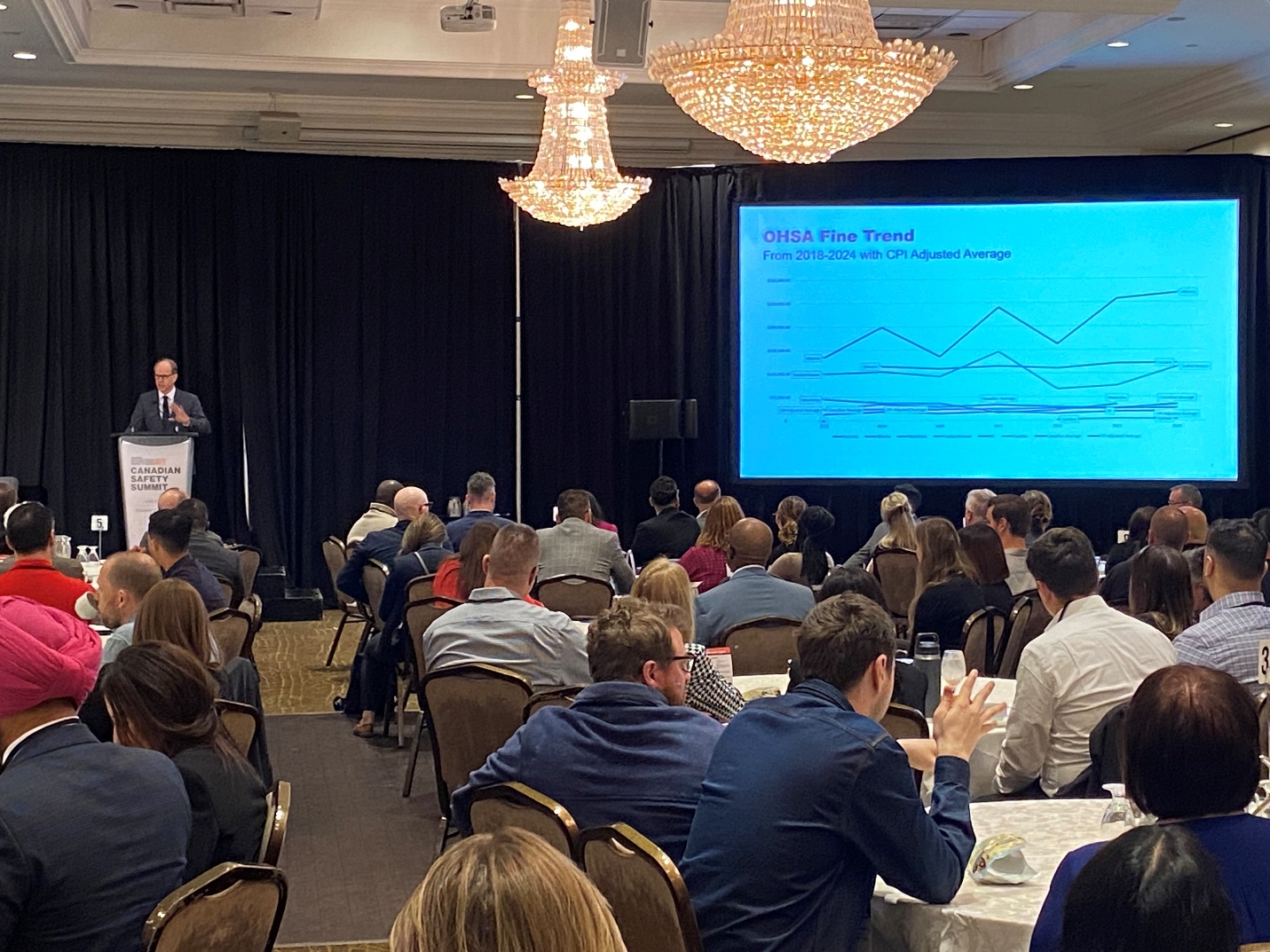'Crucial' for leaders to 'adapt to aggressive stance on OHS compliance' says lawyer

The Pearson Convention Centre buzzed with activity on Tuesday as the Canadian Safety Summit brought together industry leaders, safety professionals, and legal experts to discuss the evolving landscape of occupational health and safety (OHS) regulations. Among the standout presentations was a session by Adrian Miedema, a partner at Dentons LLP, titled "Direction of Regulatory Enforcement Efforts: Current Focus of Safety Authorities."
Miedema's presentation delved into regulation and enforcement, offering practical insights for remaining compliant in an increasingly stringent regulatory environment. The session was particularly timely given the significant increases in maximum fines for OHS offences and the introduction of prosecution-friendly changes in recent years.
Key areas of focus
Opening his presentation, Miedema emphasized the importance of understanding current trends in regulatory enforcement. "It's crucial for safety professionals to adapt to the emerging aggressive stance on OHS compliance and penalties for non-compliance," he stated, setting the tone for a detailed analysis of enforcement patterns across Canada.
He highlighted several key areas where safety authorities are concentrating their efforts:
- Adapting to increased penalties: Miedema noted the substantial rise in maximum fines under the Occupational Health and Safety Act (OHSA), particularly in provinces like Ontario and Saskatchewan. "You'll see Ontario now up to $2 million for first offences," he pointed out, illustrating the sharp increase in potential financial penalties for non-compliance.
- Extended limitation periods: The presentation also touched on the implications of the extended limitation period for laying charges, which has increased from one to two years in Ontario. "This extended period significantly impacts prosecutions, giving the authorities more time to identify and charge violations," Miedema explained.
- General Duty clause charges: There has been a noticeable rise in charges under the General Duty clause, which requires employers to take all reasonable precautions to ensure worker safety. Miedema highlighted this trend, stating, "we're seeing more prosecutions leveraging the general duty clause to address a broad range of safety issues."

Trends in fines and prosecutions
Miedema provided a detailed analysis of trends in fines across various provinces, supported by charts and data. "In provinces like Alberta and British Columbia, we're seeing higher average fines and more frequent use of administrative penalties," he noted. His charts showed that while the average fines have fluctuated, there is a clear trend towards higher penalties, particularly in cases involving severe accidents or fatalities.
"Alberta has been very active, particularly in prosecuting significant accidents," Miedema explained, citing a recent case where a $500,000 fine was imposed following a fatal incident. He also pointed out that while the number of fines in some provinces, such as Manitoba, has remained relatively steady, the average amount has increased in recent years.
Sentencing considerations and best practices
Towards the end of his presentation, Miedema discussed key sentencing considerations in recent cases, focusing on aggravating factors that influence penalty severity. "Courts are now considering a wider range of factors, including previous convictions and patterns of non-compliance," he said, advising safety professionals to maintain comprehensive compliance records.
He also offered best practices for adapting to these regulatory changes. "Staying informed and proactive is essential," Miedema urged. "Implement robust safety programs and ensure your practices meet or exceed current standards."
Future outlook
Miedema concluded with a forward-looking perspective, suggesting that the trend of increasing fines and aggressive enforcement is likely to continue. "As long as the regulators are staffed with enough people, we will see more prosecutions and higher fines, particularly in provinces that have raised their maximum penalties," he predicted.
"Employers need to be vigilant and proactive in their safety measures to navigate this complex and evolving landscape," Miedema concluded, leaving the audience with a clear message on the critical importance of compliance and risk management in today’s regulatory environment.





